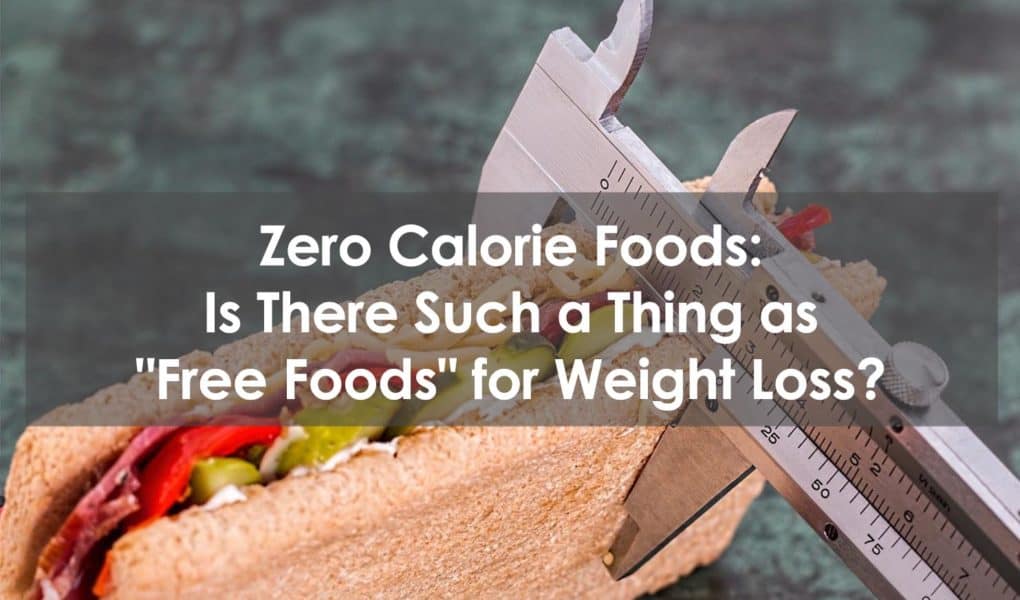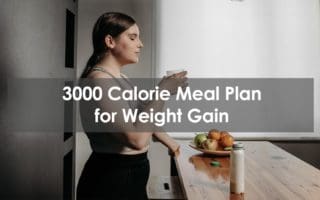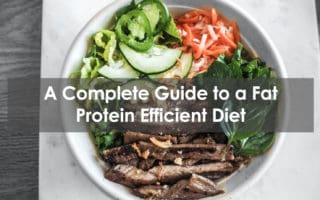When it comes to weight loss, you will always hear about supposed “zero calorie foods,” or even “negative calorie foods” that burn more calories than they provide. This article will evaluate some of those claims.
Those who tout “negative calorie foods” do have one thing right — when you’re dieting, it’s a good idea to pay attention to the types of foods you’re eating. As opposed to the IIFYM (If It Fits Your Macros) crowd, who say that you can eat anything as long as you stay under your daily calorie goal, I would recommend getting the highest quality healthy food you can, as often as possible. A negative calorie balance isn’t the only factor in a healthy lifestyle.
Is there such a thing as zero-calorie foods?
With the exception of water, vitamins and minerals, some supplements, and highly processed beverages or foods that use large amounts of sugar substitutes, everything you eat has calories (even coffee and tea have small amounts of calories!).
Some people claim that celery stalks, or other types of fibrous, nonstarchy vegetables with high water content (i.e., leafy greens), work out to be calorie-free foods because it requires more energy for your body to digest and process these foods than the number of calories those foods actually contain.
Other people claim that drinking ice cold water burns more calories than room-temperature water.
There are scant scientific studies to support this claim, but thinking in this way can actually be quite helpful if you’re on a weight loss journey. Let’s discuss why.
The thermic effect of food
It’s helpful to be aware of a phenomenon known as the thermic effect of food (TEF), or diet-induced thermogenesis (DIT). Examine.com has a helpful article on this effect. In a nutshell, a portion of the calorie content of the food we eat will be released by our body as heat, while the rest of it will be digested and metabolized by the body. After every meal you eat, your metabolic rate actually increases to some extent.
Each macronutrient — protein, carbs, and fat — has a different percentage of its total calories that will be burned as it is processed in your body.
Protein has the highest TEF. It provides 4 calories per gram, and 20-30% of those calories are burned in the digestion process.
Carbohydrates are next in line. They also provide 4 calories per gram, and 5-10% of those calories are burned in the digestion process.
Fat has the lowest TEF of all of the macronutrients. It provides 9 calories per gram, and only 0-3% of those calories are burned as they are processed in your body.
Protein: a “free food” for weight loss and body composition?
Some health experts hypothesize that lean protein sources — think chicken breast, pork loin, ham, turkey breast, fish, egg whites — are the closest thing we have to a “free food” that can be consumed ad libitum while still keeping you on track with your weight loss goals. See especially this episode of Mark’s Bell’s Power Project podcast, where Robb Wolf is being interviewed. The discussion around protein as a calorie-negative food begins at the 58:55 mark of the podcast.
I believe this is a solid argument. Consider the following.
First, protein has the highest TEF of all of the macronutrients, as you learned above. 20-30% of the calories you get from protein are burned off as heat or released in the process of your body metabolizing the food.
Second, protein’s primary function in the human body is structural, not energetic. Humans require high amounts of dietary protein to construct new proteins in the body, and our metabolism is very inefficient at turning protein into energy or storing it as future energy (fat).
For this reason, if you are dieting and find yourself constantly hungry, I recommend following this rule of thumb: eat as much lean protein (foods that are primarily protein and have low-fat content) as you’d like. You will probably find yourself less hungry and will probably experience many health benefits you never saw coming.
Other low-calorie items to consume freely on a weight loss diet
While vegetables may not be truly negative calorie foods, it’s true that most nonstarchy vegetables do contain very low calories, and are also very satiating, due to their high grams of fiber and water content.
So, you may freely consume fibrous vegetables in your weight loss journey, as long as you’re not attempting to keep your carbohydrates super low on a keto diet. Consider the following examples of calorie amounts in common vegetables:
1 cup sugar snap peas=26 calories (including 1.6 grams fiber)
1 stalk of celery=6 calories (including .6 grams fiber)
100 grams of broccoli sprouts=57 calories (including 3.9 grams fiber)
The calories of broccoli are also very low — just 31 calories for a cup of chopped broccoli (including 2.4 grams of fiber)
The calorie content of fruits (like citrus fruit and berries) can also be quite low. Fruit juice, however, contains all of the carb content of the fruit, without the fiber and the act of chewing the food that slows down digestion. Fruit juice can have a tendency to spike blood sugar levels, so beware of this.
Having a low-calorie foods list that you keep handy can be very useful. If you’re feeling hungry and your calorie intake needs to be quite low in order to lose weight, you can try filling up on lean proteins, fibrous vegetables, and moderate amounts of fruit. Adding in flavor or texture in the form of lemon juice, fat-free dressing or calorie-free dressing, fat-free sour cream, or sugar-free Jell-O can also be helpful to avoid having a diet that is too monotonous or boring to be sustainable. Many of these recommended foods also have other health benefits beyond just being low in calories.
Keep in mind that despite the fact that you do need to maintain an energy deficit if you’re striving to lose weight, avoid driving your daily calories too low. Use a reputable macro calculator or consult a qualified health professional with health coaching experience to set up your calorie goal. It needs to be low enough to see consistent weight loss, but not so low that your energy levels suffer and you lose lean body mass.







